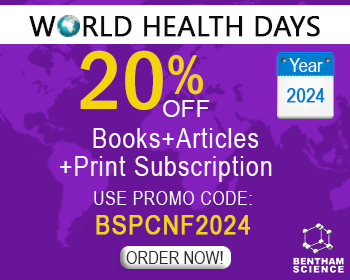Abstract
Background: Glioblastoma (GBM) is a malignant tumor that is difficult to eliminate, and new therapies are thus strongly desired. Mesenchymal stem cells (MSCs) have the ability to locate to injured tissues, inflammation sites and tumors and are thus good candidates for carrying antitumor genes for the treatment of tumors. Treating GBM with MSCs that have been transduced with the herpes simplex virus thymidine kinase (HSV-TK) gene has brought significant advances because MSCs can exert a bystander effect on tumor cells upon treatment with the prodrug ganciclovir (GCV).
Objective: In this study, we aimed to determine whether HSV-TK-expressing umbilical cord mesenchymal stem cells (MSCTKs) together with prodrug GCV treatment could exert a bystander killing effect on GBM.
Methods and Results: Compared with MSCTK: U87 ratio at 1:10,1:100 and 1:100, GCV concentration at 2.5µM or 250µM, when MSCTKs were cocultured with U87 cells at a ratio of 1:1, 25 µM GCV exerted a more stable killing effect. Higher amounts of MSCTKs cocultured with U87 cells were correlated with a better bystander effect exerted by the MSCTK/GCV system. We built U87-driven subcutaneous tumor models and brain intracranial tumor models to evaluate the efficiency of the MSCTK/GCV system on subcutaneous and intracranial tumors and found that MSCTK/GCV was effective in both models. The ratio of MSCTKs and tumor cells played a critical role in this therapeutic effect, with a higher MSCTK/U87 ratio exerting a better effect.
Conclusion: This research suggested that the MSCTK/GCV system exerts a strong bystander effect on GBM tumor cells, and this system may be a promising assistant method for GBM postoperative therapy.
Keywords: Mesenchymal stem cells, glioblastoma, HSV-TK, bystander effect, local gene therapy, umbilical cord, GCV.
[http://dx.doi.org/10.1016/j.pneurobio.2018.09.007] [PMID: 30290215]
[http://dx.doi.org/10.2174/1566523217666170605115829] [PMID: 28578643]
[http://dx.doi.org/10.1016/j.semcancer.2018.09.007] [PMID: 30266571]
[http://dx.doi.org/10.3390/cancers11020190]
[http://dx.doi.org/10.1016/j.pharmthera.2015.05.005] [PMID: 25944528]
[http://dx.doi.org/10.2174/156652311795684722]
[http://dx.doi.org/10.1166/jbn.2018.2642] [PMID: 30305211]
[http://dx.doi.org/10.1021/acsami.9b00893] [PMID: 30900870]
[http://dx.doi.org/10.1038/s41586-018-0733-7] [PMID: 30429614]
[http://dx.doi.org/10.1016/j.actbio.2018.09.015] [PMID: 30223091]
[http://dx.doi.org/10.1111/jpi.12535] [PMID: 30372554]
[http://dx.doi.org/10.1088/1758-5090/aa7484] [PMID: 28589925]
[http://dx.doi.org/10.7150/thno.26981]
[http://dx.doi.org/10.1016/j.yexcr.2013.04.002] [PMID: 23578766]
[http://dx.doi.org/10.2174/1566523218666180913152615] [PMID: 30209999]
[http://dx.doi.org/10.1021/acsami.8b05363] [PMID: 29905067]
[http://dx.doi.org/10.1089/scd.2018.0132] [PMID: 30484393]
[http://dx.doi.org/10.2174/1566523218666180214094253] [PMID: 29446737]
[http://dx.doi.org/10.2174/1574888X09666140923101110] [PMID: 25248677]
[http://dx.doi.org/10.1039/C8BM01657G] [PMID: 30942200]
[http://dx.doi.org/10.2174/1566523217666170510162459] [PMID: 28494738]
[http://dx.doi.org/10.1016/j.tice.2019.01.006] [PMID: 30947959]
[http://dx.doi.org/10.1016/j.tice.2018.08.012] [PMID: 30309499]
[http://dx.doi.org/10.1016/j.msec.2019.02.092] [PMID: 30948058]
[http://dx.doi.org/10.1016/j.bbi.2019.04.010] [PMID: 30953770]
[http://dx.doi.org/10.1186/1741-7007-11-55]
[http://dx.doi.org/10.1155/2018/7318513] [PMID: 29535779]
[http://dx.doi.org/10.1016/j.tox.2019.03.017] [PMID: 30953668]
[http://dx.doi.org/10.1080/15384047.2018.1523094] [PMID: 30257140]
[http://dx.doi.org/10.1016/j.tiv.2019.03.041] [PMID: 30946969]
[http://dx.doi.org/10.1002/jcp.22511] [PMID: 21442622]
[http://dx.doi.org/10.3727/096368915X687462] [PMID: 25695620]
[http://dx.doi.org/10.1155/2018/5912194]
[http://dx.doi.org/10.1089/scd.2012.0486]
[http://dx.doi.org/10.1007/s11010-013-1836-y] [PMID: 24104453]
[http://dx.doi.org/10.1155/2014/109389]
[http://dx.doi.org/10.1038/s41467-018-08096-8]
[http://dx.doi.org/10.1097/j.pain.0000000000001420] [PMID: 30335680]
[http://dx.doi.org/10.1186/s13058-017-0882-x]
[http://dx.doi.org/10.1016/j.molimm.2018.06.267] [PMID: 30007547]
[http://dx.doi.org/10.1016/j.actbio.2019.03.048] [PMID: 30930305]
[http://dx.doi.org/10.1002/jcp.26094] [PMID: 28703313]
[http://dx.doi.org/10.1007/s00406-019-01009-w] [PMID: 30923939]
[http://dx.doi.org/10.2174/1566523214666140424152734] [PMID: 24766134]
[http://dx.doi.org/10.1016/j.jpsychires.2019.03.007] [PMID: 30904785]
[http://dx.doi.org/10.1002/sctm.18-0039] [PMID: 30887735]
[http://dx.doi.org/10.3390/cancers11020264]
[http://dx.doi.org/10.1016/j.omto.2017.06.001]
[http://dx.doi.org/10.1016/j.canlet.2009.08.028] [PMID: 19765892]
[http://dx.doi.org/10.1097/SLA.0b013e3182368c4f] [PMID: 22042469]
[http://dx.doi.org/10.1016/j.canlet.2017.11.025] [PMID: 29175461]
[http://dx.doi.org/10.1016/j.jconrel.2015.05.007] [PMID: 25966361]
[http://dx.doi.org/10.1016/j.scr.2012.08.002] [PMID: 23022734]
[http://dx.doi.org/10.1002/ijc.32230] [PMID: 30801698]
[http://dx.doi.org/10.3390/ijms20040810]
[http://dx.doi.org/10.1016/j.jpsychores.2018.11.009] [PMID: 30654990]



























